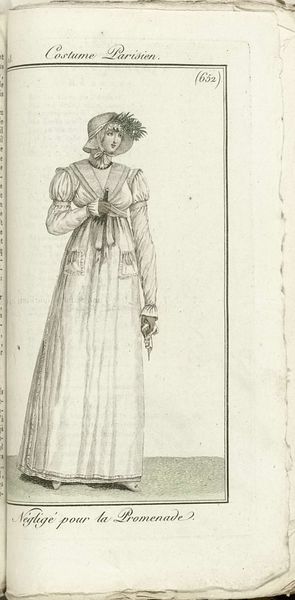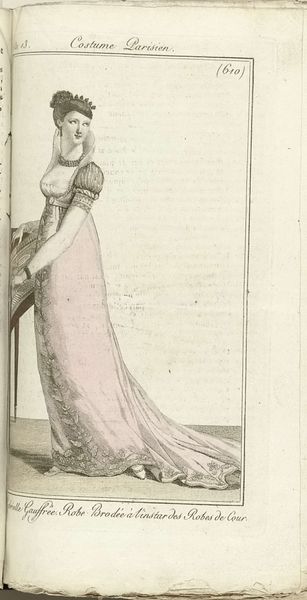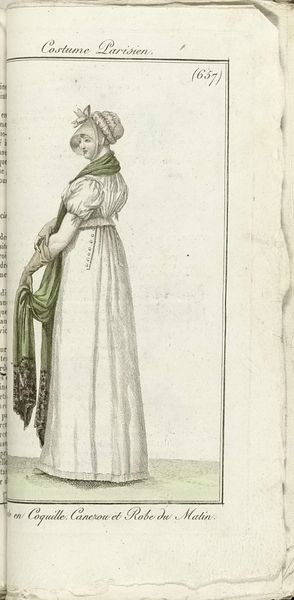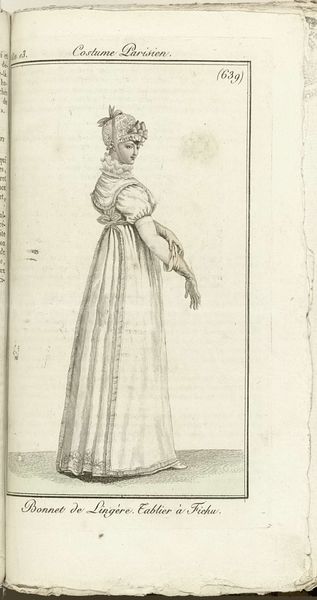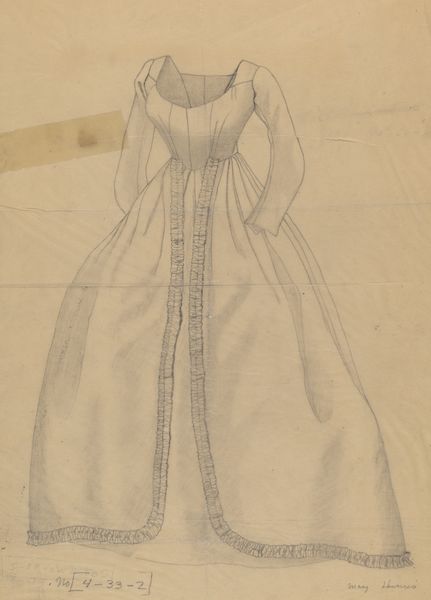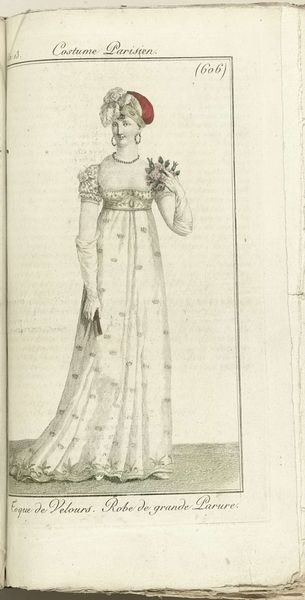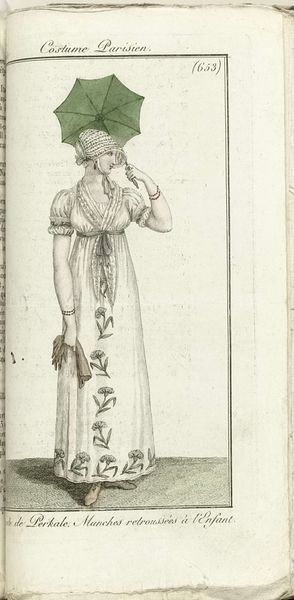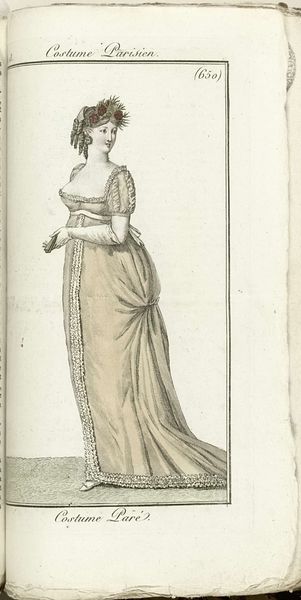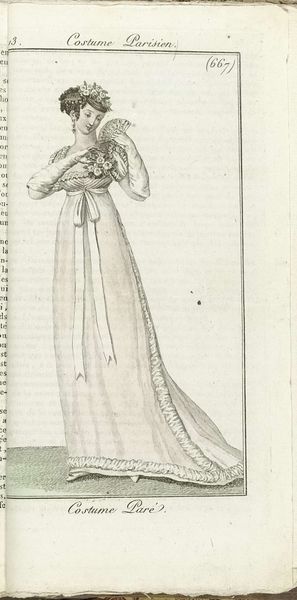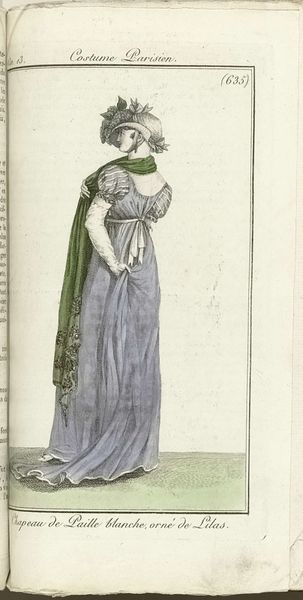
Journal des Dames et des Modes, Costume Parisien, 1805, An 13 (654) Chapeau à demi Paré. 1805
0:00
0:00
horacevernet
Rijksmuseum
drawing, print, paper, ink, engraving
#
portrait
#
drawing
#
neoclacissism
# print
#
paper
#
ink
#
history-painting
#
engraving
Dimensions: height 181 mm, width 112 mm
Copyright: Rijks Museum: Open Domain
Curator: Let's turn our attention to this engraving from 1805, titled "Journal des Dames et des Modes, Costume Parisien, 1805, An 13 (654) Chapeau à demi Paré." It's currently held at the Rijksmuseum and is attributed to Horace Vernet, employing ink on paper to capture a distinct moment in fashion history. Editor: My first impression is one of elegant restraint. The muted palette and delicate lines give it a very refined, almost fragile, quality. It feels like a whisper from another era. Curator: Indeed. These fashion plates were instrumental in disseminating Parisian styles throughout Europe. They weren't simply illustrations; they played a vital role in constructing and circulating ideals of femininity and taste within a specific social context. Vernet captures not just clothing, but the aspiration to participate in a larger cultural dialogue. Editor: It's fascinating to consider that the act of observing fashion could be seen as a political one, almost a performance of identity. Who had access to these images, who could afford to emulate these styles, and what did it signify socially to do so? The dress, while simple, speaks volumes about class and privilege. Curator: Precisely. The Neoclassical influence is evident in the high-waisted gown and relatively unadorned silhouette, a visual echo of the era’s fascination with ancient Greece and Rome. But beyond aesthetics, the fashion industry itself was becoming increasingly intertwined with burgeoning capitalist structures, impacting labor and consumption patterns. Editor: I'm struck by how this seemingly straightforward image engages with layered tensions. The woman is both an individual and a symbol, simultaneously representing herself and a set of complex socio-economic relationships. How do we reconcile the image's overt promotion of privilege with the underlying systems of labor that made it possible? Curator: That's the core question, isn't it? Art offers a portal into past ideologies, exposing how norms were constructed, negotiated, and often contested. Vernet's print invites us to consider the performance of femininity and the politics embedded in seemingly frivolous details. Editor: Ultimately, analyzing these works becomes an act of re-contextualizing historical norms and shedding light on enduring questions of power and representation. Curator: A potent reminder of art's capacity to reflect—and challenge—the very societies that produce it.
Comments
No comments
Be the first to comment and join the conversation on the ultimate creative platform.
